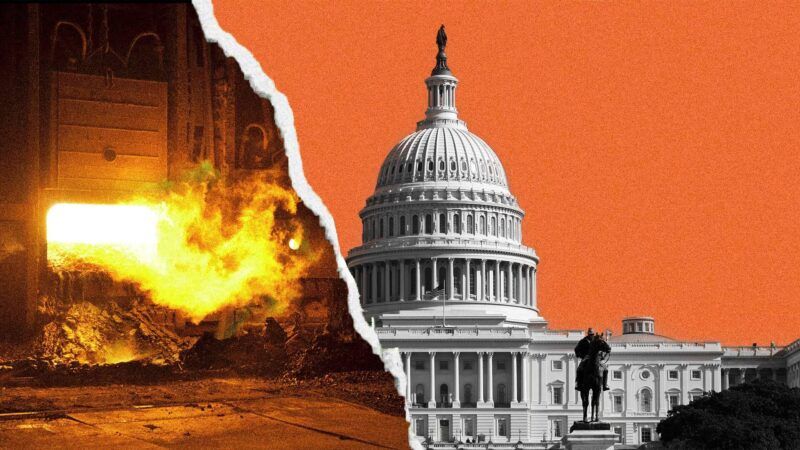The Trump Administration Is Spending $130,000 To Burn $800,000 Worth of Food Meant for Hungry Children
If the president truly cares about cutting waste, he should not be paying to set taxpayer dollars on fire.

One of President Donald Trump's hallmark promises during his 2024 campaign was that he would target waste. It's a good goal—the federal government is not exactly famous for being savvy with resources, and few politicians appear seriously interested in addressing that problem.
A recent report calls into question how serious the Trump administration is about applying this ethos, and is a reminder that a commitment to fiscal responsibility also requires a commitment to efficiency.
That's because the government, it turns out, is going to incinerate about 500 metric tons of emergency food that is often used for victims of disasters abroad and was purchased for hungry children.
One of Trump's first initiatives in January was to dismantle much of the U.S. Agency for International Development (USAID), which has a history of funding ideologically driven projects that have absolutely no business being paid for by taxpayers. There were good reasons to slash funding for the agency. The food here, however, had already been purchased. There would be no returning it.
In that vein, when the administration reined in USAID, Secretary of State Marco Rubio promised congresspeople on the House Appropriations Committee that he would make sure the government sent the food to its intended beneficiaries, according to The Atlantic. Whatever you think about foreign aid, that would seem the obvious decision. Again, the food—high-energy biscuits that can supply young children with their nutritional needs—had already been paid for, to the tune of $800,000.
But that delivery never happened, and now the near-million-dollar supply is about to expire, as food typically does after it sits for months. Perhaps most ironic is that, under the previous protocol, the agency could have passed the food off to a global relief organization at effectively no cost to the budget. Instead, per The Atlantic, USAID was hamstrung from doing so under new approval requirements, and so now taxpayers will spend an additional $130,000 to burn it.
This is, in some sense, a theme. Trump's Department of Government Efficiency was another welcome idea that promised to address the same problems: waste, ridiculous government spending, an insane national debt, and so on. It has, thus far, failed to spur much positive change, in part because the administration focused on making cuts—namely, firing people—that drew media attention but did not make any real dent in our spending problem.
"We're left instead with the worst of both worlds. Agencies still impose the same heavy regulatory burdens, but in some cases now lack the personnel to administer them," Ryan Young, a senior economist at the Competitive Enterprise Institute, told Reason's Eric Boehm in May. "That means delays and paralysis for the private sector, while the quality of governance gets even worse. It's one more example of this administration's laziness. They go for the quick headline-grabbers, then call it a day."
Trump's willingness to thrust the issues of waste and government spending into the limelight is still a good thing. But actions speak louder than words, at the risk of sounding queasily trite. And it is hard to think of something more wasteful than paying to essentially set taxpayer dollars on fire.



Show Comments (39)